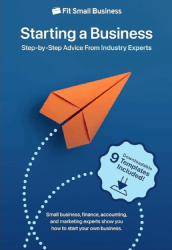Starting a dropshipping business is legal, low-cost, and low-risk, with profit margins of 15% to 20%
How to Start a Dropshipping Business in 10 Steps (2025)
This article is part of a larger series on Retail Management.
Unlike traditional ecommerce, dropshipping eliminates the need for inventory, warehousing, and order fulfillment. A $200 to $600 investment covers platform fees and marketing. Managing the business typically requires five to 10 hours per week, with most dropshippers reaching profitability in six months and full-time income potential within 12 to 18 months.
Learn how to start a dropshipping business by watching the video or following my step-by-step guide below.
If you’re new to dropshipping, check out the dropshipping business model article to understand how it works.
How will President Trump’s new 10% tariff increase on China imports impact dropshippers?
Dropshippers are split on the new tariff hike. Some on Reddit say it’s no big deal — they’ve got huge markups and can absorb the cost. Others plan to pass it straight to customers. Then there are those looking for workarounds, like switching to ports in lower-tax countries (Thailand, for example) or even bringing suppliers back to the US. Everyone’s got a different strategy, but one thing’s clear — adjustments are coming.
So, what can you do?
- Find new suppliers: Look for options outside China to keep costs down.
- Adjust your pricing: You may need to tweak prices while still keeping them competitive.
- Add more value: Offer bundles, better service, or unique products to justify any price hikes.
The bottom line? Dropshipping is still doable, but you’ll need to be smart about how you adapt to these changes.
Step 1: Develop a competitive business concept
To start a dropshipping store, create a clear business concept around which to center your brand, content, and product collection. This concept can be based on your passions or current sales trends. Don’t worry; since dropshipping doesn’t require managing inventory, you have the flexibility to experiment and refine your approach.
I highly recommend focusing on niche products, which can improve marketing effectiveness, improve search rankings, and drive higher purchase intent.
Ask yourself how your products can help solve customer problems. This exercise gives you an edge in a competitive market by helping you establish meaningful relationships with buyers.
To succeed, identify trending products with high demand. Metrics like sales volume, keyword search volume, and trend data can help you assess the potential of a product, plus helpful tools and resources to get the data you need:
- Sales volume: Choose products with proven demand rather than trying to fill a market gap. You can refer to Amazon’s Best Sellers Lists and Shopify’s list of trending products as jumping-off points for your research.
- Keyword search volume: Keyword research helps gauge demand and potential success. Standard tools for keyword research are the Google Ads’ Keyword Planner and Ahrefs Keyword Explorer.
- Trend data: Understanding search trends helps predict long-term success and seasonal demand. Google Trends presents search data through graphs showing interest over time. It allows users to see results on a customizable timeline and refine them by search channels such as web search, image search, or Google Shopping search.
Let’s put these metrics in an example. For keyword search volume, general keywords (“camping supplies”) can measure consumer interest in a category while more specific keywords (“portable camping stove”) can give you an idea of product popularity — as shown in the image below.
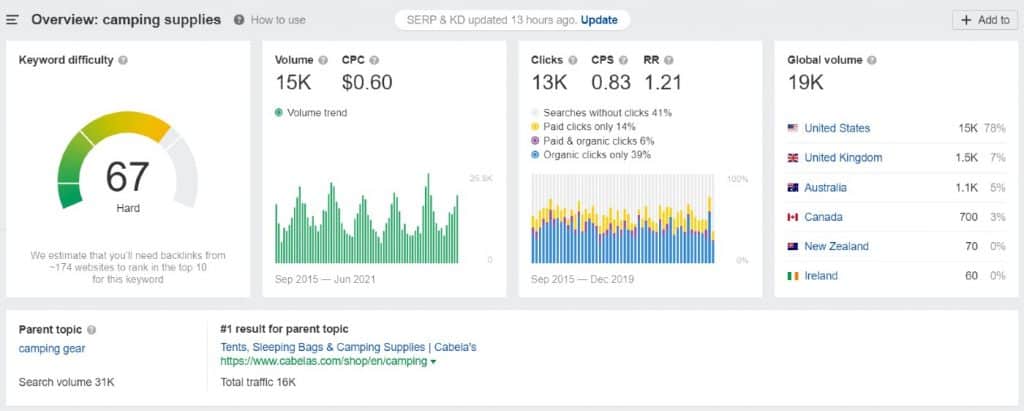
Ahrefs’ Keyword Explorer shows that the term “camping supplies” boasts 15,000 monthly searches in the US alone (Source: Ahrefs)
Meanwhile, the image below suggests that the performance of the keyword “camping supplies” over the past five years has had a heavy seasonal impact.
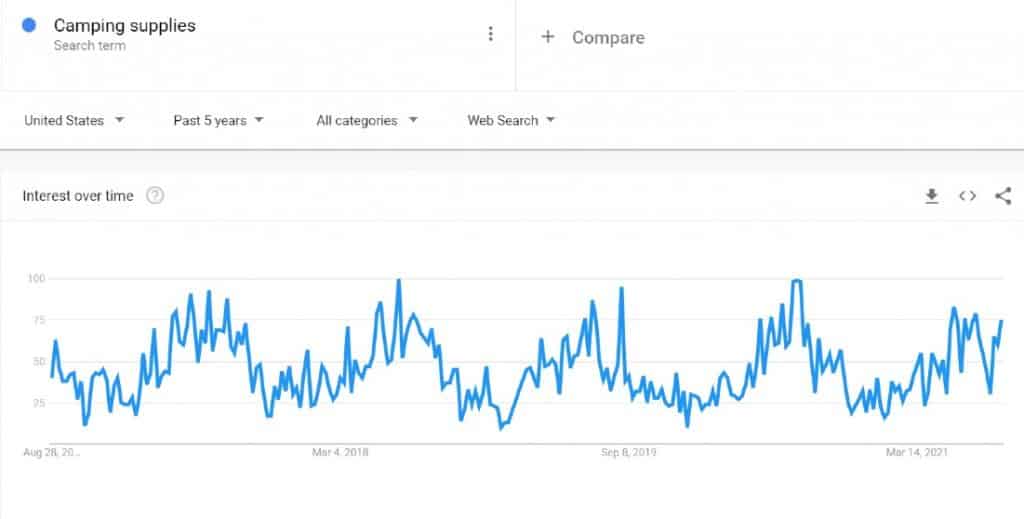
(Source: Google Trends)
Step 2: Analyze your competitors
Studying competitors helps you refine your dropshipping business plan and gauge niche competition. Since only 10% to 20% of dropshipping startups succeed, choosing a less saturated market improves your chances.
Here are some effective methods to research your competitors:
- Search Google: Look up your keywords and analyze top-ranking sites, their layout, pricing, product descriptions, and shipping policies.
- Monitor social media: Check Instagram, Facebook, and TikTok for competitor activity, ad strategies, and influencer partnerships. Use Facebook’s Ad Library for insights.
- Subscribe to emails: Sign up for competitor newsletters to track promotions, email frequency, and messaging style.
Step 3: Name & brand your dropshipping business
Once you’ve defined your products and target audience, choose a name and brand that align with your vision. Since social media and search marketing are key to online success, pick a name that’s memorable, relevant, and easy to spell.
- Select your business name: Your name should reflect your products or audience. Shopify’s business name generator can help spark ideas if you’re stuck.
- Check for available domains and social handles: When you have some possible name ideas, search available domains through a domain provider like Google, GoDaddy, or BlueHost. I highly recommend securing your business name on all major social platforms, even if you don’t plan to use them right away — just like claiming a domain, it protects your brand for future growth.
- Build a brand concept: Branding sets the tone for your business, making it essential for attracting and retaining customers. This is where a well-thought-out logo, color scheme, and typography come into play. If you’re artistically inclined or interested in marketing, this step can be a lot of fun. If this doesn’t sound like your cup of tea, you can enlist professional help on sites like UpWork.
Here are some free resources to help you nail this step down:
- How to Choose a Domain Name
- Domain Name Ideas
- How to Pick a Brand Colors and Fonts for Your Brand
- How to Create a Brand Style Guide (+ Free Template)
Step 4: Source products from reliable suppliers
Sourcing products is one of the more time-consuming steps in starting a dropshipping business, but it has a significant impact on your profits — so it’s worth committing a lot of time and attention. You’ll need to consider each product and vendor for total viability.
Consider these factors as you review potential dropshipping products and suppliers:
- Item Popularity: Check sales volume on dropshipping marketplaces—hot sellers are usually safer bets.
- Profitability: Factor in wholesale cost, pricing, and fees. Adjust markups to maximize profit or attract buyers.
- Quality: Since you can’t inspect every item, rely on supplier ratings and sales numbers. Ordering samples can help.
- Location: Shipping speed and cost affect sales. Opt for suppliers offering fast, trackable shipping like ePacket. Learn more about ePacket.
- Reliability: Read supplier reviews and choose vendors with strong track records.
- Return Policy: Understand each supplier’s return and refund policies to avoid complications.
The two main ways to source dropshipped goods are through dropshipping marketplaces or direct-source suppliers. I don’t recommend sourcing directly from suppliers for now as it’s an arduous process, and suppliers typically have wholesale requirements that you might not be able to meet.
For new sellers, marketplaces like DSers offer the easiest way to start a dropshipping business. These platforms connect you with thousands of suppliers, from independent manufacturers to wholesalers and aggregate vendors like AliExpress.
Marketplaces automate key processes, eliminating the heavy lifting. They integrate directly with ecommerce platforms, allowing you to search for products, add listings with one click, sync stock levels, auto-forward orders to suppliers, and automate shipping confirmations. You only pay the wholesale cost once a buyer has made a purchase.
With profit margins averaging 15% to 20%, dropshipping marketplaces provide a profitable, low-cost, and low-risk business model. However, since these platforms are widely accessible, competitors can sell the same products.
While some marketplaces charge monthly or per-transaction fees, most offer free starter plans, making it easy to launch a dropshipping store without upfront costs.
Dropshipping Supplier | Starter Plan Cost | Best For |
|---|---|---|
Free | Shopify sellers. Lists products from thousands of individual vendors and AliExpress. | |
Free | All sellers. High-volume, import dropshipping marketplace works with most ecommerce platforms. | |
Free | All sellers. Marketplace for US-based suppliers with fast shipping and turnkey programs. | |
$24.99/month | Shopify and Volusion sellers. Lists millions of products from US- and import-suppliers. | |
Free | All sellers. Fast shipping on goods from US and European suppliers. | |
Free | All sellers. Lists a collection of trendy goods from US, European, and Canadian suppliers. | |
Free | All sellers. Print-on-demand (POD) supplier lets you add designs to products to print and ship on order. |
Step 5: Plan your dropshipping website strategy
To launch your dropshipping business, you need an ecommerce website that is user-friendly, visually appealing, and optimized for traffic. The first step is deciding whether your store will follow a product-focused or content-focused model. This choice influences your website’s structure, platform selection, and marketing approach.
Product-focused dropshipping stores
These traditional storefront-style websites prioritize product listings with high-quality images, descriptions, and specifications. To establish credibility, an About Us and frequently asked questions (FAQs) sections are a must.
This model works well for general dropshipping stores or niches that require little explanation — like socks or phone cases. While these stores may not feature much on-site content, they can drive engagement through offsite channels like social media, YouTube, and email marketing.
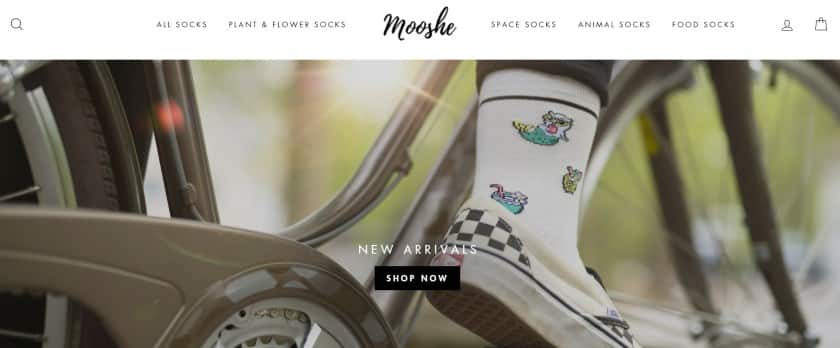
This product-focused dropshipping site leverages simple, eye-catching visuals with minimal written content. (Source: Mooshe)
Content-focused stores
For niches that require education or have passionate communities, a content-driven approach can be more effective. These stores use blog posts, tutorials, recipes, or instructional videos to provide value and support product listings.
Content-focused websites attract not just shoppers but also information seekers, increasing organic traffic and future sales potential. They also benefit from Google’s search algorithm, which favors informative content, helping these stores rank higher.
Infrared saunas are a great example of products that do well with content-focused stores, as shown below. The website sells saunas through informational blog posts, eBooks, videos, and educational FAQs — all accessible from the store’s homepage.

(Source: Celebration Saunas)
Regardless of your approach, the next step is selecting the right ecommerce platform to bring your website to life.
Step 6: Choose your ecommerce platform
To set up your dropshipping store with shopping cart and payment processing features, you’ll need an ecommerce platform. The right platform depends on your store’s model and supplier strategy. For most product-focused stores, Shopify is a great fit. It simplifies everything — from choosing a domain and designing your site to automating orders and tracking shipments — all in one place.
Moreover, Shopify has been my consistent choice for best ecommerce platform for small businesses — it’s easy to use, is packed with helpful tools, and integrates seamlessly with popular dropshipping marketplaces like DSers, Doba, and Spocket.
You can also look into using social media, like TikTok and Chinese marketplace Temu, to dropship products. And while you can sell on marketplaces like Amazon, be cautious. These platforms have high seller fees, strict shipping deadlines, and demanding customer service requirements. Many dropshippers succeed there, but they’re not ideal for beginners. It’s best to start with your own site, build a solid process, and then expand to larger marketplaces.
For more info on how Shopify works, read my full Shopify review.
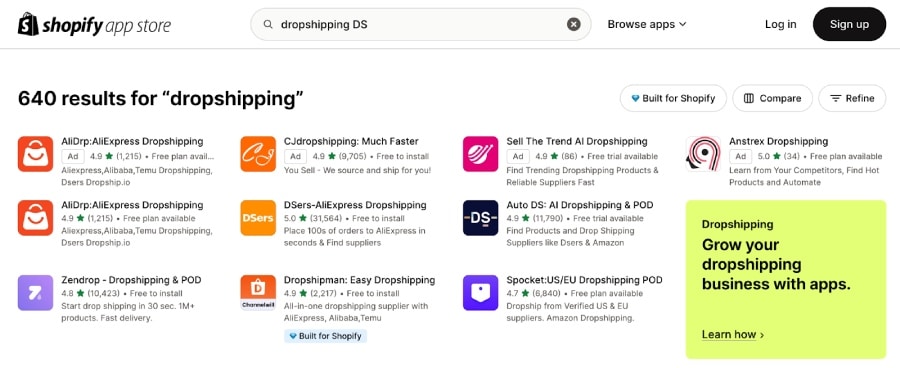
Shopify currently integrates with about 640 dropshipping marketplaces, tools, and apps (Source: Shopify).
Read our free resources on how dropshipping works in the platforms I mentioned:
- How to Set Up Shopify Store for Dropshipping
- The Ultimate Guide to Temu Dropshipping
- TikTok Dropshipping: Ultimate Guide for SMBs
- How to Sell on Amazon Without Inventory: 5 Different Methods
Step 7: Build your dropshipping site
Building your dropshipping store starts with setting up payment processing, connecting a domain, and designing a user-friendly layout. Choose a template, customize your pages with your brand’s colors and fonts, and make sure key pages like product listings and FAQs are in place.
These steps will heavily depend on the ecommerce platform you signed up with, so you need to refer to your platform’s setup wizard or help section. Don’t worry, most ecommerce platforms like Shopify have plug-and-play functionalities that make building a website easy even without tech know-how.
Instead, I’d like to recommend some areas of your site to focus on:
- Product descriptions: Don’t just use the manufacturer’s descriptions — rewrite them to highlight benefits and improve SEO. Unique descriptions help your site rank better in search results and create a stronger connection with potential buyers. See our guide and free worksheet on crafting product descriptions to learn more.
- Payment processing: A smooth checkout process boosts conversions. Most ecommerce platforms come with built-in payment options like credit cards, PayPal, and Apple Pay. Adding Buy Now, Pay Later (BNPL) financing can also increase sales by giving customers flexible payment options.
- Shipping methods: While you’re not handling fulfillment, you still need a clear shipping strategy. Unexpected fees at checkout cause abandoned carts, so be upfront about costs. You can offer free shipping (absorbing the cost or setting a minimum purchase), charge a flat rate, or pass on the exact shipping fee to customers. Read our guide to profitable shipping strategies to learn more.
- Customer service: Make it easy for customers to contact you. At minimum, include a “Contact Us” page with an email or contact form. Live chat and phone support can boost trust and conversions. Using a business email (e.g., support@yourstore.com) instead of a personal one also adds credibility.
- Return policy: Returns are inevitable, and in dropshipping, they can be tricky. The best approach is to resolve issues without requiring a return. Offer a free replacement for damaged or incorrect items and ask for photos to verify claims. If needed, refund customers without requiring a return or let them send the item back at their own cost. Whatever you choose, clearly outline your return policy on your site. Not quite sure how to put it? Try starting with our free return policy templates.
After you’ve created an online store, it’s time to work on the operational side of your ecommerce business.
Step 8: Start financial & legal preparation
Before launching your dropshipping site, take care of these key financial and legal steps first:
- Separate business and personal finances: Open a business checking account to keep income and expenses organized. Without this, bookkeeping becomes messy, and tax issues can arise. A business credit card is also a great way to earn rewards on supplier purchases.
- Get necessary licenses and permits: Some locations require a business license—even for online businesses. Check your state, county, and city regulations to see what applies to you.
- Understand sales tax: You typically only need to collect sales tax from customers in states where you have a physical presence (nexus). Most states offer a sales tax exemption for resale, so you won’t pay tax on supplier purchases if you obtain an exemption certificate.
Sorting these early ensures smooth operations and legal compliance.
Want more guidance? Our article breaks down how to register a business.
Step 9: Market your dropshipping store
Once your store is live, marketing is key to driving sales. Here are effective, budget-friendly tactics:
- Social media: Set up Facebook, Instagram, and Pinterest accounts to promote your products with engaging content and shoppable posts. Sync your store with Facebook Shop and use Instagram and Pinterest to drive traffic.
- Influencer marketing: Partner with influencers to tap into their audience. Use affiliate networks or reach out directly to negotiate commissions — 63% of shoppers are likely to buy products recommended by influencers they trust, according to Traackr.
- Email marketing: Build an email list early and send updates on new products, promotions, and sales. Shopify and other platforms offer built-in email marketing tools.
- Paid ads: Use Facebook and Google Ads to reach targeted buyers. However, investing in paid ads will greatly depend on where your audience is. Read our recommended paid social advertising platforms.
- SEO: Optimize product descriptions, title tags, and meta descriptions to improve search rankings. A widely cited statistic is that 68% of online experiences begin with a search engine — effective SEO boosts organic traffic.
- Content marketing: Blog posts, YouTube videos, podcasts, and infographics build brand awareness and improve SEO. If you can’t create content yourself, hire freelancers or collaborate with established creators.
- Community involvement: Engage with niche Facebook groups, Reddit communities, and forums. Build trust by sharing advice and product recommendations without overly promoting your store.
A well-rounded marketing strategy ensures visibility and sustainable growth.
Step 10: Run your dropshipping store
Running your dropshipping store involves overseeing your orders, serving your customers, and performing basic accounting. As your business develops, you will also need to use analytics to refine your offerings and find ways to drive growth (and make more money).
Here’s what the duties of a dropshipping store owner look like:
- Order management: While fulfillment is primarily automated, monitor your ecommerce dashboard for unshipped orders and follow up with suppliers if needed. Building strong supplier relationships can help you scale and improve margins over time.
- Customer service: Stay responsive to inquiries via your “Contact Us” page. Consider setting aside dedicated time for support or outsourcing help if needed as orders increase.
- Accounting: Track your income, expenses, sales tax, and fees to stay financially organized. Keep up with license renewals and platform costs.
- Optimize and grow: Use analytics to improve performance:
- Sales: Identify top-selling products, best ad channels, and category trends.
- Shopper Behavior: Understand customer interactions, mobile vs desktop shopping, and key demographics.
- Profitability: Pinpoint the most profitable products and monitor month-over-month growth.
To learn more about the top metrics and KPIs (key performance indicators) you should monitor to improve your business, read our guide to retail analytics.
By staying proactive, you’ll set your store up for long-term success.
Frequently asked questions (FAQs)
Click through the tabs below to get answers on the most often asked questions on how to get started in dropshipping.
To start a dropshipping business, choose a niche, find reliable suppliers, and set up an online store using platforms like Shopify or WooCommerce. Next, optimize your website, set competitive prices, and implement marketing strategies such as social media, SEO, and paid ads to attract customers. Finally, manage orders, provide excellent customer service, track analytics, and refine your approach to scale your business.
Dropshipping can be profitable, but success depends on factors like niche selection, supplier reliability, pricing strategy, and marketing efforts. While profit margins typically range from 15% to 20%, scaling through effective advertising, SEO, and customer retention can significantly increase earnings. With low startup costs, it’s a great way to enter ecommerce, but consistent effort is needed to sustain profitability.
You can start a dropshipping business for under $200 with a domain name and an online store. However, testing product samples may add a few hundred dollars, depending on quantity and type. Ongoing costs include ecommerce platform fees ($30 to $300/month) and marketing expenses for ads and content creation to drive sales.
No. Many new and small dropshippers operate as a sole proprietorship. However, registering for an LLC reduces some elements of personal liability. If your business grows or you have high ambitions to scale, registering for an LLC is a wise choice.
No, you don’t need a business license to start a dropshipping business, but having one can provide legal protection and tax benefits. Some suppliers may require a business license or sales tax ID before working with you. It’s best to check your local regulations to ensure compliance with any necessary permits or tax obligations.
The cost of forming an LLC for your dropshipping business varies by state, typically ranging from $50 to $500 for filing fees. Some states also require annual fees or reports, which can add $50 to $300 per year. Additional costs may include hiring a registered agent or legal service, but these are optional.
The best business structure for dropshipping depends on your goals and risk tolerance. For most dropshippers, an LLC business structure is the best option since it balances liability protection and ease of management.
Bottom line
Starting a dropshipping business is a low-cost, low-risk way to enter ecommerce, offering flexibility for part-time entrepreneurs and the potential for steady income. While it may take a few months to gain traction, success comes from thorough research, effective marketing, and strong store management.
To streamline the process, consider using Shopify and DSers, which seamlessly integrate to help you launch and manage your store with ease.
